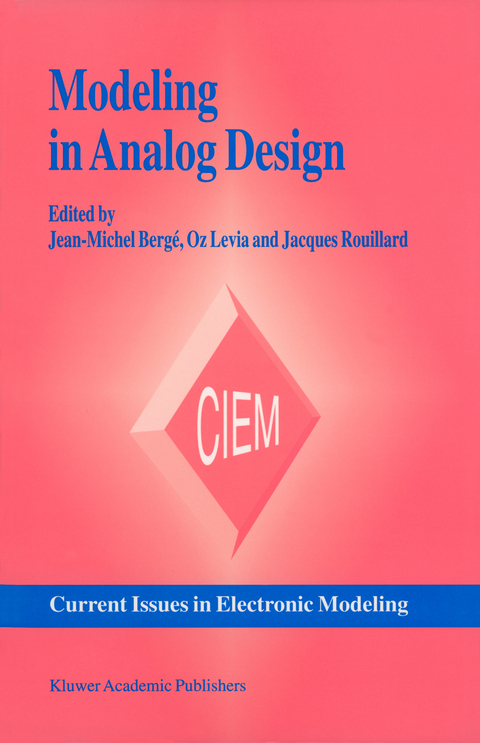
Modeling in Analog Design
Springer-Verlag New York Inc.
978-1-4613-5988-3 (ISBN)
This book is essential reading for analog designers using behavioral languages and analog CAD tool development environments who have to provide the tools used by the designers.
Modeling in Analog Design highlights some of the most pressing issues in the use of modeling techniques for design of analogue circuits. Using models for circuit design gives designers the power to express directly the behaviour of parts of a circuit in addition to using other pre-defined components. There are numerous advantages to this new category of analog behavioral language. In the short term, by favouring the top-down design and raising the level of description abstraction, this approach provides greater freedom of implementation and a higher degree of technology independence. In the longer term, analog synthesis and formal optimisation are targeted.
Modeling in Analog Design introduces the reader to two main language standards: VHDL-A and MHDL. It goes on to provide in-depth examples of the use of these languages to model analog devices. The final part is devoted to the very important topic of modeling the thermal and electrothermal aspects of devices.
This book is essential reading for analog designers using behavioral languages and analog CAD tool development environments who have to provide the tools used by the designers.
1. Vhdl-A Design Objectives and Rationale.- 1.1. Introduction.- 1.2. Scope of VHDL-A.- 1.3. Structure Aspects.- 1.4. Behavior Aspects.- 1.5. Simulation Mechanisms.- 1.6. Interface between Analog and Digital Descriptions.- 1.7. Concluding Remarks.- 2. Modeling in Vhdl-A: Devices, Networks and Systems.- 2.1. Introduction.- 2.2. Overview of VHDL-A.- 2.3. A MOSFET Model.- 2.4. The VHDL-A Code for a MOSFET.- 2.5. Differential Equations and Macro Models in VHDL-A.- 2.6. Conclusion.- 3. Analog Modeling Using Mhdl.- 3.1. Introduction.- 3.2. Features of MHDL.- 3.3. Model and Simulation Types.- 3.4. Analog Modeling Technology with MHDL Examples.- 3.5. CAD/CAE Tool Interaction.- 3.6. Concluding Remarks.- 4. Modeling and Simulation of Electrical and Thermal Interaction.- 4.1. Introduction.- 4.2. Fundamentals of Electro-Thermal Simulation.- 4.3. Modeling Self-Heating Effects.- 4.4. Thermal models.- 4.5. Simulation Considerations.- 4.6. Application Example.- 4.7. Conclusions.- 5. Modeling of Power Mosfet and Bipolar Transistors Taking into Account the Thermoelectrical Interactions.- 5.1. Introduction.- 5.2. Complete Model.- 5.3. The Electrical Network.- 5.4. Thermal Influence on the Electrical Behavior of the Transistors.- 5.5. The Thermal Network.- 5.6. Experiment-Characterization.- 5.7. Conclusion.
| Reihe/Serie | Current Issues in Electronic Modeling ; 2 |
|---|---|
| Zusatzinfo | XV, 148 p. |
| Verlagsort | New York, NY |
| Sprache | englisch |
| Maße | 160 x 240 mm |
| Themenwelt | Informatik ► Weitere Themen ► CAD-Programme |
| Informatik ► Weitere Themen ► Hardware | |
| Technik ► Elektrotechnik / Energietechnik | |
| ISBN-10 | 1-4613-5988-0 / 1461359880 |
| ISBN-13 | 978-1-4613-5988-3 / 9781461359883 |
| Zustand | Neuware |
| Haben Sie eine Frage zum Produkt? |
aus dem Bereich


